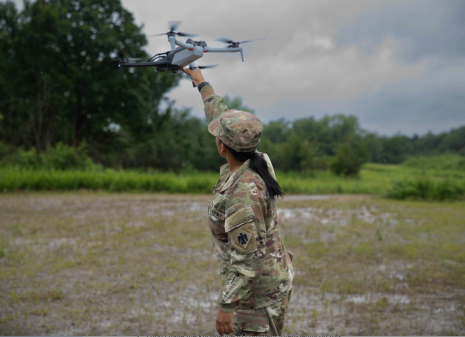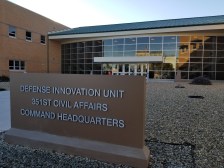Legislators call for reorganizing Pentagon’s R&D office, shifting focus to commercial tech integration

Lawmakers in the House Armed Services Committee are proposing to change the official job title of the Pentagon’s chief technology officer and designate new responsibilities for the position.
A provision in the mark for the fiscal 2024 National Defense Authorization Act by the Cyber, Information Technologies and Innovation subcommittee would rename the position of undersecretary of defense for research and engineering — a post currently held by Heidi Shyu — and change it to “undersecretary of defense for technology integration and innovation.”
In addition to serving as the Pentagon’s CTO, the undersecretary would also be responsible for “establishing policies on, and supervising, all elements of the Department relating to the identification of commercial technology for potential use by the Department and integration of such technology into the armed forces (and the Department),” the legislation states.
Both lawmakers and officials at the Pentagon have long admitted to difficulties in bringing new and innovative commercial tech into the department’s acquisition system. Often, promising capabilities fail to move past prototyping and into production due to the Pentagon’s bureaucratic and slow-moving processes — a phenomenon known as the “valley of death.”
In response, initiatives have been stood up across the DOD to help bridge gaps between the commercial world and the Pentagon.
Under the proposed legislation, the undersecretary of defense for technology integration and innovation would serve as the principal advisor to the secretary of defense on all commercial innovation and integration in the Pentagon, while implementing policies and procedures related to acquiring commercial products, commercial components and commercial services, per the preference under section 3453 of U.S. Code Title 10.
The undersecretary would also be responsible for promoting modular open system architecture approaches in acquisition in order to “encourage increased competition and the more frequent use of commercial technology within the Department,” the legislation states.
It also adds the duty of “providing for an alternate path to integrate commercial technology into the Department that does not include applying the Joint Capabilities Integration and Development System process to the acquisition of technology that readily exists in the commercial sector.” That task would be performed alongside the vice chairman of the Joint Chiefs of Staff.
In addition, lawmakers added qualifications to the role to include not only a civilian with a background in technology or science, but also someone with experience in “private or venture capital, commercial innovation or prototype-to-production transition” and “managing complex programs and leveraging public-private capital partnerships.”
At the same time, a separate provision in the subcommittee mark would shake up the organizational and management structure for the Defense Innovation Unit (DIU), which aims to facilitate and accelerate the Pentagon’s adoption of commercial tech for military purposes.
‘‘The Director of the Defense Innovation Unit shall report directly to the Secretary of Defense without intervening authority and may communicate views on matters within the responsibility of the Unit directly to the Secretary without obtaining the approval or concurrence of any other official within the Department of Defense,” the mark states.
The Silicon Valley-based organization currently reports to Shyu’s office. The Pentagon named Doug Beck, a former vice president of Apple, as DIU’s new director in April.
The provision requires the secretary to conduct an assessment of whether or not DIU is appropriately staffed to conduct its mission, as well as send a report to Congress about plans to address any staffing shortfalls and the funding required to do so.
The legislation did not clarify, however, how DIU’s elevated position within the Office of the Secretary of Defense and the newly defined roles for the proposed undersecretary of defense for technology integration and innovation would be reconciled.
Members of the subcommittee did not immediately respond to DefenseScoop’s request for comment. The Office of the Secretary of Defense would not comment on ongoing legislation. The Defense Innovation Unit also did not respond to requests for comment.
The subcommittee is scheduled to mark up the policy bill on Tuesday.






